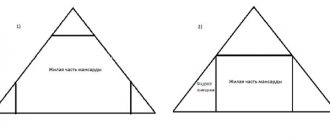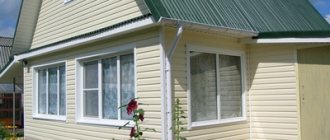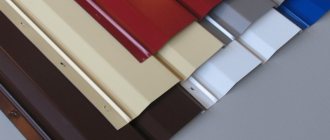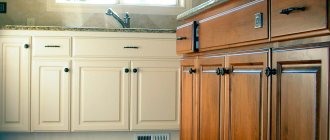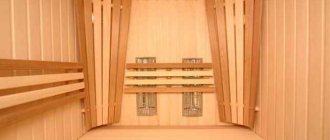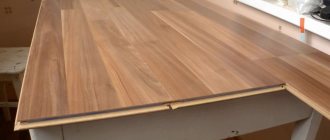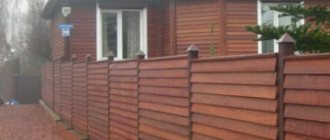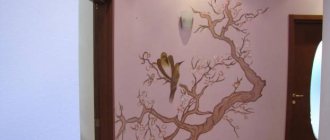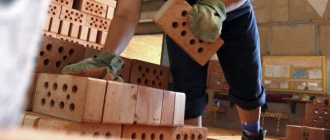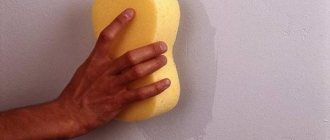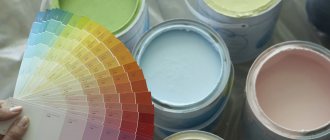The construction of any structure is completed interior decoration. The main criterion for interior decoration of a house is to give it a well-groomed appearance and efficient operation. One of the popular types today is finishing with eurolining.
The material is a thin board fixed around the perimeter of the room. Lining has been used for interior decoration for quite a long time. This type of interior decoration came to us from transport construction, when wooden panels were used to cover cars.
[contents]
What nuances should be taken into account when working with lining
Lining is a board of different thicknesses, which is made from different types of wood. This material got its name because of the place where it was first used. These are carriages on trains, the inner walls of which were lined with small slats of wood. Today it is fashionable to cover the walls in a bathhouse with clapboard, as well as in a sauna or gazebo.
It is necessary to take into account that decorating walls with clapboard yourself requires a thorough, balanced approach. Please pay attention to the following details:
- Packed boards should be stored horizontally on a backing.
- The humidity of the storage room should be within normal limits.
- Storage should not be allowed when the packaging is exposed to direct sunlight.
- It is important to pay attention to the expiration dates indicated on the packaging.
- The cost of 1 m2 of forced linden wood, which perfectly tolerates temperature changes and high humidity, costs 500 rubles, and to cover the walls in the main rooms at the dacha, on average, you can spend a smaller amount - 300 rubles per m2. Important! The price of the material directly depends on the quality of the wood.
On a note! Wall lining is purchased with a reserve equal to ten percent of the total area. It must be remembered that the width of each element is measured by the internal depth, so you need to subtract 10-12 mm from the groove depth.
More about wood trim
As already mentioned, wooden lining is the most popular option today. Finishing with clapboard inside the house is very quick and easy, and the result exceeds all expectations. Wooden lining is absolutely environmentally friendly, has a pleasant appearance and does not lose its ideal appearance for many years.
However, you need to approach the choice of this lumber as responsibly as possible. First of all, you need to find a conscientious and reliable supplier, whose products will fully comply with the declared characteristics. To do this, you need to read reviews about suppliers before purchasing.
As for the lining itself, its quality is determined by the type of wood and the degree of drying. The grade of wood is determined in accordance with GOST, which distinguishes 5 grades: highest, 1st, 2nd, 3rd and 4th. Of course, every owner of his home wants the finishing to retain its ideal appearance for many years, so it is worth choosing the highest or 1st grade lining.
The material should not have any falling off knots or any kind of damage. As for the degree of drying, the ideal indicator for this lumber is no more than 10-15%.
The color of the lining inside the house depends not only on the use of paints and varnishes, but also on the type of wood. For example, aspen lining is light in color, while cedar lining is much darker.
It is important to know that according to the design, the lining is classified into several types: standard wooden lining, euro lining, block house, American. In most cases, it is not possible to combine these products, so you need to take care of purchasing the exact quantity (or better yet, with a reserve) of the same type of lining.
Processing of lining material
After the purchase, the question becomes, how to cover the walls with clapboard yourself so that the coating is wear-resistant and beautiful? The primary task is proper pre-treatment, because the manufacturer does not carry out any manipulations with the wood. The following actions must be taken:
- Products made from pine needles need to be degreased. To do this, it is better to wash the board with a 25% acetone solution. After this, wipe with a cloth soaked in water and dry.
- All damage, even the most minor, should be repaired with a wood putty mixture. It can be bought at any hardware store.
- If you need to change the shade, you can use stain or other professional impregnations that will preserve the beautiful texture of the wood.
What is needed to prepare walls for lining
There are two main options for making a wall with clapboard: glue and frame. Note that the first will require you to have a perfectly flat surface. That is why the second method, which involves erecting a sheathing, is preferable. Among the advantages of this method is the creation of additional space for insulating the room.
In order to fix the lining on the wall, you need:
- Tools. In this particular case, you should prepare a drill with different attachments, a plumb line (level), pliers, a hammer, a handsaw or a jigsaw.
- Slats for constructing the frame. Solid wooden beams with a cross section of 30*60 mm are suitable for these purposes. At the same stage, the substrates used to level the surfaces are prepared.
- Fastening materials: dowels, screws, nails, clamps, and, if necessary, hangers for the frame.
Important! Even if the frame fastening method is used, preliminary preparation of the working surfaces is required. The procedure is simple; all decorative elements are removed from the wall, and defects are erased. After this, additional priming is carried out.
How to create a sheathing for fastening lining
Preparing walls for lining is the most scrupulous process. You will have to tinker with creating a special design. General recommendations:
- Treat the timber with fireproof impregnation and antifungal agents.
- Make sure that the slats are positioned strictly perpendicular to the decorative boards.
- It is necessary to maintain a uniform distance between the slats, the step of which is 40-50 cm.
- It is necessary to leave a distance between the floor and ceiling. This recommendation is especially relevant for wooden houses that are constantly subject to shrinkage.
- The evenness of the installation of the frame must be carefully checked; plumb lines and a level are used for this.
- If a space forms between the lath and the wall, it must be filled with prepared dies.
Important! The construction of sheathing makes it possible to equip the walls with an additional insulating layer. The insulation is fixed between the resulting racks.
Which fixation option should I choose?
It is important to decide on the method of fixing the board materials. You can sheathe a wall using several methods:
- Through view of fasteners. This is the simplest solution that does not require much effort. The idea is that the screws are screwed directly through the front side. This method involves applying markings so that the fastening points are located on the same line. In addition, holes are drilled on the carriage board in advance, which will prevent the wood from deteriorating and cracking. When screwing in the screws, make sure that their heads are completely recessed into the wood. This can be easily achieved if you pre-drill out a place for the head with a large-caliber drill. The resulting holes are masked with special eraser plugs or filled with putty. Among the disadvantages, this method significantly disrupts the external aesthetic appeal of the coating.
- The lining can be attached to the wall using decorative nails. Their hats were initially decorated to match the color of the material.
- Hidden nails without heads would be an excellent option. The peculiarity is that such nails can only be driven at an angle of 80 degrees. This will make it possible to hide those areas that have been violated.
- If you have a professional stapler on your farm, you can use staples for fastening.
Important! You should not buy a manual tool for driving staples, which is sold on every corner, since its use does not provide reliable fixation.
- For the smallest thickness of the carriage board, clamps are used. The main advantage is that the fastenings are invisible.
The method of attaching the lining to the wall is selected individually, based on the specific situation. But we note that recently it is the clamps that have become the most popular.
Types of installation
There are two ways to attach the lining: vertical and horizontal. Before choosing a method, you should consider that vertical cladding will visually increase the height of the building's exterior.
Vertical board on the facade of a frame house
Vertical siding trim
Horizontal, on the contrary, will visually increase the width of the facade. Before buying material, calculate how many boards you will need for one and the other method. Consider the width and length of the beams to minimize waste.
Facade cladding with clapboard horizontally
The process of fastening the lining
Before sheathing the walls, the material is brought into the room and left for two days. This manipulation is essential for the tree to fully acclimatize.
Important! If you rush and skip this stage, there is a high probability that the structure will warp.
All work must be carried out at positive air temperatures, and the optimal humidity is at least 60%.
The essence of the technique:
- Most often, installation is carried out in a horizontal position, so install the first plank at the bottom so that its tongue (groove) faces upward.
- As in wallpapering, fixing should begin from a corner that is located away from the entrance to the room.
- Check the board thoroughly with a level, taking into account the horizontal and vertical surface.
- The first board is fastened, and the rest are then grooved and then fixed with clamps. be careful with the first and last elements, it is better to secure them with screws.
- After finishing, you need to decorate the walls with baseboards and corners, or you can paint the lining walls with stain or varnish the surface.
Experience guarantees completion of finishing work within a day, even including installation of the frame. Natural materials will give the room comfort and warmth, will last a long time, and will preserve its beauty.
Sheathing schemes
There are two ways - using external fastening and hidden. With the external method, the boards must be fixed with fasteners. In the second case, the panels are attached to the sheathing from the groove side, where there is a joint with a tenon. The appearance with this option will be more aesthetic. The lining can be mounted vertically, horizontally and, if necessary, in a non-standard way. When laying panels horizontally, the teeth must be directed from the lower element to the upper one, and not vice versa. When sheathing a log wall, staples and nails for them and lathing are used. To clap a room with smooth walls, you need to use bars. They are placed at a distance of no more than 50 cm between adjacent elements and perpendicular to the panels. The cladding is framed with decorative skirting boards and fillets
Basic fastening methods:
- nails;
- screws;
- staples;
- kleimers.

